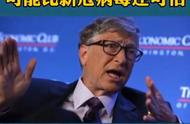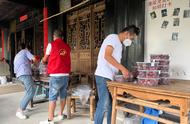[闽南网]
2018年12月29日,比尔·盖茨在自己官方博客发表了,题为《What I learned at work this year》文章,分享了自己2018一整年的“年终总结”,谈了自己一整年的思考感悟。小编特意整理了下 比尔·盖茨2018年末发表的心得体会英文全文与中文翻译,供大家阅读。

比尔·盖茨2018年终总结思考感悟中英全文 比尔盖茨心得体会中文全文
新浪科技讯北京时间1月2日中午消息,在我小时候,每逢圣诞节父母都会在卡片上写下家庭总结。父亲的律师事务所越办越好,母亲的志愿工作越来越顺利,女儿们学校表现突出,比尔继续特立独行。
有些人会觉得这很老套,但我就是喜欢这样的传统。在每年年底的这几天里,我仍然喜欢总结回顾自己的工作和生活。那些令人兴奋的方方面面,以及可以改进的方方面面。
在2018年年末,我希望继续与大家分享我在这一年的感悟。
我发现在63岁时,我向自己提问的问题是当年刚刚二十出头时从未曾想过的。
当年的年终评估唯独一个问题:微软的软件是否实现了个人计算机梦想?
而在今年,我无疑仍然会评估自己的工作质量。但是除此之外,我也会对自己的生活提出问题。我是否花了足够的时间陪伴家人?是否学习了足够多的新事物?是否结识了新朋友又加深了老友关系?25岁的我对这些问题嗤之以鼻,但随着年龄的增长,我发现这些问题越来越有意义。
在寻找有意义的问题上,梅琳达帮我拓宽了思路。沃伦·巴菲特也给我了帮助,他说,他的成功标准是“你在乎的人是否也同样在乎你?”我觉得这是一个很好的判断指标。
这听起来似乎很棒,并且我认为我们的世界也在慢慢经历类似的成长过渡,慢慢开始对幸福形成更广泛的理解。在人类历史的大部分时间里,我们一直致力于通过对抗疾病和试图种植足够的食物来延长人类寿命。因而,我们的寿命确实大幅增长。技术在疫苗、药物和卫生设施的改善领域发挥了重要作用。
但我们仍旧需要大量的创新来解决疟疾或肥胖等问题,也需要更多地关注生活质量的改善。我认为,这将成为未来许多重大突破的主题。比如,软件可以感受到你的失落情绪,为你联系好友,在睡眠和饮食方面为你提供个性化建议,以及帮助你更有效地利用时间。
和疾病一样,针对这些事务我们目前尚无明确对策,未来也不一定会有。但是,我们并未停止创新,并且在未来我相信我们的工作会不断加速。
当我回顾过去这一年时,我也会思考我工作的具体领域。其中很多工作是通过我们的基金会完成的,但也有很多是我们的基金会并未涉及的(比如我在能源和阿尔茨海默病方面的工作)。但这一切的联系是,我始终相信创新可以拯救更多生命并改善每个人的福祉。很多人都低估了创新在改善生活这一点上的力量。
以下是我对工作中创新进展顺利与否的一个总结。
阿尔茨海默病
2018年,阿尔茨海默病的研究有两大积极趋势。
其一是研究人员对如何阻止阿尔茨海默病有了许多新的想法。
多年来在这一领域占主导地位的第一代理论侧重两种分别被称为“淀粉状蛋白”和“Tau蛋白”的蛋白质。这两种蛋白质会在大脑中导致斑块和缠结,堵塞并*死脑细胞。治疗的理念也是阻止斑块和缠结的形成。诚然,我十分希望这些努力能有回报,但到目前为止成功迹象渺茫。
去年,研究人员着重于研究第二代假设。其中一个理论认为,患者的脑细胞因其能量生产者(即线粒体)损坏而不能正常工作。另一个理论认为脑细胞无法正常工作是因为部分免疫系统过度活跃并开始攻击脑细胞。
这个例子极好地说明了改进我们对生物的理解可以减低医疗成本和减少人类痛苦。
今年的另一个趋势是阿尔茨海默病社区正致力于获得更多更好的数据。我们正与研究人员合作,帮助他们更便捷地分享他们研究的成果,以便大家更好地掌握比如该疾病如何发展等问题。
在过去几年中,美国政府大幅增加了对阿尔茨海默病研究的资助,从每年4亿美元增长到每年20亿美元。在更好地诊断方面,我们也有长足进步。
到目前为止,唯一一个我仍没有看到未来明确发展路径的问题是如何开发更有效的方式来为临床试验招募患者。若没有对阿尔茨海默病的一个简单和有效的诊断,我们很难找到处于疾病发展早期阶段的患者进行临床试验。并且,找到足够的患者也需要较长的时间。但如果我们可以找到预筛选参与者的方式,我们或许可以更快地开展新的试验。
但无论如何,在其他领域的发展动力是如此之多——比如科学工具、更好的诊断、不断改进的数据访问等等——以至于我相信,只要我们能够解决招募问题,我们将会在未来十到二十年内取得实质性进展。
脊髓灰质炎(小儿麻痹症)
我原本以为在这一年我们可以进一步根除脊髓灰质炎。但不幸的是,2018年脊髓灰质炎病例(29例)高于2017年的数量(22例)。
我低估了在政治暴力和战争肆虐地区为儿童接种疫苗的难度。为了躲避战争,家庭四处迁徙,导致我们难以持续跟踪儿童并确保他们接种到所有剂量的疫苗。或者,污水处理系统遭到破坏,当儿童接触到感染者的排泄物时,病毒则会进一步传播。
这也是阿富汗和巴基斯坦的脊髓灰质炎病例从未得到根除的原因——事实上,他们是全球唯二两个从未根除脊髓灰质炎的国家。
我在脊髓灰质炎这个问题上花费了大量时间和精力,其中不乏跟资助者交流确保他们愿意继续出资资助项目,哪怕根除疾病所需的时间比我们任何人想象得都要长久。我告诉他们,成功带来的巨大好处,以及倘若我们事业未竟疾病会席卷重来的风险。
我还告诉他们,创新带来的不同之处。现在,我们能够在疾病开始传播之前测试污水样本以跟踪病毒和找到传染源。并且,全球卫生界也在战争区域寻找创新方式,近来他们已经成功在叙利亚和索马里阻止了疫情蔓延。
最后,我对在比利时和巴拿马进行测试的新型口服疫苗抱有极大期待。测试结果预期在2019年得出,若疫苗经验证有效,它将有望克服之前的口服疫苗在鲜有儿童得到接种地区所面临的难题。新的疫苗或将在2020年投入使用。
尽管挑战重重,我仍然对未来尽快根除脊髓灰质炎感到积极乐观。
能源
全球温室气体排放量在2018年继续上升。对我来说,这不过是强调了一个事实,即唯一扭转气候变化最糟糕现象的方式是在清洁能源方面取得突破。
有些人认为我们已经拥有我们所需的一切工具,并且降低太阳能和风能等可再生能源的成本可以解决这个问题。太阳能和风能成本降低诚然令我感到欣喜,我们也应该在任何可以部署这些新能源的地方部署它们。
但是太阳能和风能属于间歇性能源,并且我们也不太可能在不久的将来即可以拥有廉价电池,可以允许我们存储足够的能源以备在无阳光或无风时使用。另外,所有排放量中,电力的排放仅占到25%。也就是说,我们还需要解决另外75%的排放。
今年,我参与的清洁能源投资基金“Breakthrough Energy Ventures”宣布了我们投资的第一批公司。我们正在关注气候变化的所有重要驱动因素。我们选择的这些公司皆有十分优秀的人管理经营,有望将创新型清洁能源理念从实验室带到市场上。
明年,我将更多地讨论美国如何重新在核电研究领域重获主导权。
核能是应对气候变化的理想选择,因为它是唯一无碳且24小时不间歇的可扩展能源。目前存在的反应堆问题,比如事故风险等,可以通过创新得到解决。
美国拥有世界一流的科学家、企业界和投资资本,尤其适合创造这些进步。
但不幸的是,美国已然失去了50年前的全球核能领导者地位。为重新找回领先者位置,我们需要投入新的基金、更新监管法规并向投资者证明我们的认真态度。
如果我们克服这些障碍,我们应该努力探索先进核技术中的一些较为有前景的理念。十年前,我成立了一家名为TerraPower的公司,其采用一种称为“行波反应堆”的安全方式,可以防止扩散并且产生极少的废料。若美国的监管环境发生变化且我们能够找到足够资金,我们或许可以在美国建立试点项目。
世界需要关注各种解决方案以阻止气候变化。先进核能是其中之一,我真切希望可以说服美国领导者涉足这一领域。
下一轮流行病
1918年,西班牙大流感在全球造成近5000万人死亡。1918年的西班牙大流感至今仍是有史以来最致命的自然灾害之一。
我原本以为,值此大流感100周年之际,人们会广泛讨论我们是否已经准备好迎接下一轮全球流行病。但不幸的是,100年前的大流感并没有激发新的讨论,并且我们也远未准备好迎接下一轮全球流行病。
人们担心恐怖主义和气候变化等危险无可厚非。但若说有什么可以在短时间内*死数千万人的话,全球流行病是其中之一。并且,可能性极高的一种形式就是流感,因为流感病毒更为容易通过空气传播。在今天,传染性和致命性类似于1918年那场流感的疫病可以在短短六个月时间内夺走3300万人的生命。
这些年来,我一直在研究流行病。为充分做好准备,我们需要一个能团结各国政府的方案。我们需要考虑如何处理隔离问题,确保供应链可以触及受感染区域,决定如何启用军队等等。但在2018年,这些问题并没有获得多少进展。
好消息是,我们已经在疫苗上取得进展,这种疫苗可以保护人们免受各种流感病毒的伤害。今年,我拜访了马里兰州的美国国家卫生研究院,并从主导这一项工作的研究人员那里获得了最新消息。
开发通用流感病毒疫苗的挑战十分引人入胜。所有病毒菌株都有一定的共同结构。如果你从未接触过流感,那么可以开发一种疫苗让你的免疫系统学会识别这些结构并攻击它们。但是,倘若你已经得过流感,那么你的身体会过分执着于曾经让你生病的那一种菌株。这样一来,你的免疫系统就很难再去识别共同结构。
因此,我们可以开发一种通用疫苗来保护从未感染过流感的那些人(比如小孩子们)。而至于已经感染过流感病毒的人,事情就有些困难,而且短期内难以解决。但新的研究资金正在源源不断地进入,科学家们也在努力。
为了充分利用这些科学成果,世界需要建立一个监测和应对流行病的全球系统。这是一个政治问题,需要各国政府*的互相合作。这个问题值得更多更多关注。
基因编辑
11月份,一名中国科学家宣布他成功更改了两名女婴的胚胎基因,从而将基因编辑的话题推向风口浪尖。他的工作的空前之处在于,他编辑了婴儿的细胞,意味着这些基因更改将遗传到他们的下一代。
不少人认为这位科学家的研究越界了,对这一点我表示赞同。但是如果他的工作能够让更多人了解并讨论基因编辑,这也不失为一件好事。这或许将成为最为重要的公开讨论,在此之前,我们尚未有过如此广泛的讨论。
基因编辑存在大量的道德问题。虽然基因编辑可以为治疗和治愈疾病带来诸多乐观前景,但是这项技术也可能会导致不公平现象加剧,尤其是这一技术成为富人特权的话。
我很惊讶这些问题竟然没有引起公众的足够关注。当今最受关注的是人工智能这一话题。然而,基因编辑值得受到类似的关注。
展望未来
虽然我从未写下过新年愿望,但我一直会为新的一年制定明确的目标并实现这些目标的方案。随着年龄的增长,这两件事正变得越来越一致。因此,今年,我为自己准备了2019年的新年愿望。我正致力于学习并思考技术可以对我们生活质量产生重大影响同时也会带来复杂道德和社会鼓励的两大关键领域。
其一是隐私与创新之间的平衡。例如,我们如何使用数据来深度了解教育或健康问题,同时又可以有效地保护人们的隐私?
另一个是在教育中使用技术的问题。软件对学生的学习能起到多大的帮助?多年来,人们一直在激烈讨论技术对教育的巨大影响。人们对此持有怀疑态度无可厚非。但我认为,最终事情会往好的方向发展。
比尔·盖茨2018年终总结思考感悟中英全文 比尔盖茨心得体会英文原文
Every Christmas when I was a kid, my parents would send out a card with an update on what the family was up to. Dad’s law firm is growing, Mom’s volunteer work is going strong, the girls are doing well in school, Bill is a handful.
Some people think it is corny, but I like the tradition. These days, at the end of each year, I still enjoy taking stock of my work and personal life. What was I excited about? What could I have done better?
I thought I would share a few of these thoughts as 2018 concludes.
One thing that occurs to me is that the questions I am asking myself at age 63 are very different from the ones I would have asked when I was in my 20s.
Back then, an end-of-year assessment would amount to just one question: Is Microsoft software making the personal-computing dream come true?
Today of course I still assess the quality of my work. But I also ask myself a whole other set of questions about my life. Did I devote enough time to my family? Did I learn enough new things? Did I develop new friendships and deepen old ones? These would have been laughable to me when I was 25, but as I get older, they are much more meaningful.
Melinda has helped broaden my thinking on this point. So has Warren Buffett, who says his measure of success is, “Do the people you care about love you back?” I think that is about as good a metric as you will find.
It may sound grand, but I think the world is slowly going through a similar transition to a broader understanding of well-being. For most of human history, we have been focused on living longer by fighting disease and trying to grow enough food for everyone. As a result, life spans have gone up dramatically. Technology has played a key role in that through vaccines, medicines, and improved sanitation.
We still need a lot of innovation to solve problems like malaria or obesity, but we are also going to be focusing more on improving the quality of life. I think this will be the thrust of many big breakthroughs of the future. For example, software will be able to notice when you’re feeling down, connect you with your friends, give you personalized tips for sleeping and eating better, and help you use your time more efficiently.
There are not the same clear measures of these things as there are for diseases, and there may never be. But there is nascent work in this field and I think it is going to accelerate.
As I look back on the year, I am also thinking about the specific areas I work on. Some of this is done through our foundation but a lot of it (such as my work on energy and Alzheimer’s work) is not. What connects it all is my belief that innovation can save lives and improve everyone’s well-being. A lot of people underestimate just how much innovation will make life better.
Here are a few updates on what’s going well and what isn’t with innovation in some areas where I work.
Alzheimer’s disease
I saw two positive trends in Alzheimer’s research in 2018.
I saw two positive trends in Alzheimer’s research in 2018.
One is that researchers focused on a new set of ideas about how to stop Alzheimer’s.
The first generation of theories, which dominated the field for years, emphasized two proteins called amyloid and tau. These proteins cause plaques and tangles in the brain, clogging up and killing brain cells. The idea was to stop the plaques and tangles from forming. I hope these approaches pay off, but we have not seen much evidence that they will.
In the past year, researchers have doubled down on a second generation of hypotheses. One theory is that a patient’s brain cells break down because their energy producers (called mitochondria) wear out. Another is that brain cells break down because part of the immune system gets overactivated and attacks them.
This is a great example of how improving our understanding of biology will reduce both medical costs and human suffering.
The other trend this year is that the Alzheimer’s community focused on getting more and better access to data. We’re working with researchers to make it easier for them to share information from their studies broadly so that we can better understand questions like how the disease progresses.
Over the past few years, the U.S. government has dramatically stepped up funding for Alzheimer’s research, from $400 million a year to over $2 billion a year. There is also a big push to create better diagnostics.
The only problem where I don’t yet see a clear path forward yet is how to develop more efficient ways to recruit patients for clinical trials. Without a simple and reliable diagnostic for Alzheimer’s, it’s hard to find eligible people early enough in the disease’s progression who can participate in trials. It can take years to enroll enough patients. If we could find a way to pre-screen participants, we could start new trials more quickly.
But there is so much momentum in other areas—scientific tools, better diagnostics, improved access to data—that as long as we can solve the recruitment problem, I am confident that we will make substantial progress in the next decade or two.
比尔·盖茨2018年终总结思考感悟中英全文 比尔盖茨心得体会原文
Polio
I thought we would be closer to eradicating polio today than we are.
I thought we would be closer to eradicating polio today than we are. Unfortunately, there were more cases in 2018 than in 2017 (29 versus 22).
I underestimated how hard it would be to vaccinate children in places where there’s political violence and war. Families move around to escape fighting, which makes it hard to keep track of children and make sure they get all the doses of the vaccine. Or sewage systems get destroyed, allowing the virus to spread as children come into contact with an infected person’s excrement.
This is a key reason why Afghanistan and Pakistan have never been free of polio—in fact they are the only two countries that have never been free of polio.
I spend a lot of time on polio, part of it talking to the funders to make sure they continue their commitment even though eradication is taking longer than any of us would like. I remind them of the huge benefits of success, and the risk that the disease will return in a big way if we don’t finish the job.
I also remind them what a difference innovation is making. We’re now able to test sewage samples to track the virus and find the source before an outbreak starts. And the global health community is finding creative ways to work in war zones, having stopped outbreaks in Syria and Somalia in recent years.
Finally, I am hopeful about a new oral vaccine being tested in Belgium and Panama. The results should be out in 2019, and if this one proves effective, it would overcome some of the problems with previous oral vaccines when they’re used in places where few children are immunized. The new vaccine could be in use as soon as 2020.
Despite all the challenges, I am still optimistic that we can eradicate polio soon.
Energy
Global emissions of greenhouse gases went up in 2018. For me, that just reinforces the fact that the only way to prevent the worst climate-change scenarios is to get some breakthroughs in clean energy.
Some people think we have all the tools we need, and that driving down the cost of renewables like solar and wind solves the problem. I am glad to see solar and wind getting cheaper and we should be deploying them wherever it makes sense.
But solar and wind are intermittent sources of energy, and we are unlikely to have super-cheap batteries anytime soon that would allow us to store sufficient energy for when the sun isn’t shining or the wind isn’t blowing. Besides, electricity accounts for only 25% of all emissions. We need to solve the other 75% too.
This year Breakthrough Energy Ventures, the clean-energy investment fund I’m involved with, announced the first companies we’re putting money into. You can see the list at http://www.b-t.energy/ventures/our-investment-portfolio/. We are looking at all the major drivers of climate change. The companies we chose are run by brilliant people and show a lot of promise for taking innovative clean-energy ideas out of the lab and getting them to market.
Next year I will speak out more about how the U.S. needs to regain its leading role in nuclear power research. (This is unrelated to my work with the foundation.)
Nuclear is ideal for dealing with climate change, because it is the only carbon-free, scalable energy source that’s available 24 hours a day. The problems with today’s reactors, such as the risk of accidents, can be solved through innovation.
The United States is uniquely suited to create these advances with its world-class scientists, entrepreneurs, and investment capital.
Unfortunately, America is no longer the global leader on nuclear energy that it was 50 years ago.
Unfortunately, America is no longer the global leader on nuclear energy that it was 50 years ago. To regain this position, it will need to commit new funding, update regulations, and show investors that it’s serious.
There are several promising ideas in advanced nuclear that should be explored if we get over these obstacles. TerraPower, the company I started 10 years ago, uses an approach called a traveling wave reactor that is safe, prevents proliferation, and produces very little waste. We had hoped to build a pilot project in China, but recent policy changes here in the U.S. have made that unlikely. We may be able to build it in the United States if the funding and regulatory changes that I mentioned earlier happen.
The world needs to be working on lots of solutions to stop climate change. Advanced nuclear is one, and I hope to persuade U.S. leaders to get into the game.
The next epidemic
In 1918, the Spanish flu killed 50 million people worldwide. It still ranks as one of the deadliest natural disasters ever.
I had hoped that hitting the 100th anniversary of this epidemic would spark a lot of discussion about whether we’re ready for the next global epidemic. Unfortunately, it didn’t, and we still are not ready.
People rightly worry about dangers like terrorism and climate change (and, more remotely, an asteroid hitting the Earth). But if anything is going to kill tens of millions of people in a short time, it will probably be a global epidemic. And the disease would most likely be a form of the flu, because the flu virus spreads easily through the air. Today a flu as contagious and lethal as the 1918 one would kill nearly 33 million people in just six months.
I have been studying this for several years. To be prepared, we need a plan for national governments to work together. We need to think through how to handle quarantines, make sure supply chains will reach affected areas, decide how to involve the military, and so on. There was not much progress on these questions in 2018.
There has been progress toward a vaccine that would protect you from every strain of the flu.
The good news is that there has been progress toward a vaccine that would protect you from every strain of the flu. This year I visited the U.S. National Institutes of Health in Maryland and got an update from some of the people leading this work.
The challenges of making a universal flu vaccine are fascinating. All strains of the virus have certain structures in common. If you’ve never been exposed to the flu, it’s possible to make a vaccine that teaches your immune system to look for those structures and attack them. But once you’ve had the flu, your body obsesses over the strain that got you sick. That makes it really hard to get your immune system to look for the common structures.
So it is clear how we could make a universal vaccine that would protect anyone (such as the very young) who has never been exposed to the flu before. But for anyone who has already had the virus, it is a lot harder. The problem is a long way from being solved, but new research money is coming in and more scientists are working on it.
To make the most of these scientific efforts (some of which our foundation is funding), the world needs to develop a global system for monitoring and responding to epidemics. That is a political matter that requires international cooperation among government leaders. This issue deserves a lot more focus.
Gene editing
Gene editing made the news in November when a Chinese scientist announced that he had altered the genes of two baby girls when they were embryos. What is unprecedented about his work is that he edited their germline cells, meaning the changes will be passed down to their children. (The other, less controversial type of gene editing involves somatic cells, which aren’t inherited by future generations.)
I agree with those who say this scientist went too far. But something good can come from his work if it encourages more people to learn and talk about gene editing. This might be the most important public debate we haven’t been having widely enough.
The ethical questions are enormous. Gene editing is generating a ton of optimism for treating and curing diseases, including some that our foundation works on (though we fund work on altering crops and insects, not humans). But the technology could make inequity worse, especially if it is available only for wealthy people.
I am surprised that these issues haven’t generated more attention from the general public. Today, artificial intelligence is the subject of vigorous debate. Gene editing deserves at least as much of the spotlight as AI.
I encourage you to read up on it whenever you have a chance. Keep an eye out for articles in your news feed. If you are willing to read a whole book, The Gene by Siddhartha Mukherjee is very well done. This story is one to follow, because big breakthroughs—some good, some worrisome—are coming.
Looking ahead
I am making a resolution for 2019.
Although I have never been one for New Year’s resolutions, I have always been committed to setting clear goals and making plans to achieve them. As I get older, these two things look more and more like the same exercise. So I am making a resolution for 2019. I am committing to learn and think about two key areas where technology has the potential to make an enormous impact on the quality of our lives, but also raises complex ethical and social considerations.
One is the balance between privacy and innovation. How can we use data to gain insights into education (like which schools do the best job of teaching low-income students) or health (like which doctors provide the best care for a reasonable price) while protecting people’s privacy?
The other is the use of technology in education. How much can software improve students’ learning? For years we have been hearing overheated claims about the huge impact that technology would have on education. People have been right to be skeptical. But I think things are finally coming together in a way that will deliver on the promises.
I will be posting updates on these and other issues on the Gates Notes.
In the meantime, Melinda and I are working on our next Annual Letter. The theme is a surprise, though it is safe to say we’ll be sharing some positive trends that make us optimistic about the future. We’ll send the letter out in February.
I hope you have a happy and healthy start to 2019.
,












